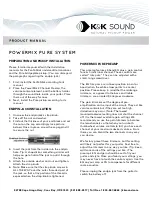
<4. WIRING>
4-16
IM 01E30D01-01EN
Connection
Description
Example 3
In this case,
No communication is
possible when a four-
wire cable is used.
R
250
Ω
E5
0.0236
×﴾
R1
+
R2
﴿
+
20.6
≤
E5
[
V
]
≤
30
*7
AXR Terminal
Electric
counter
+
*6
*5
JIS Class A
*8
SUPPLY
DO
Cable Resistance:R1
[
Ω
]
*9
Cable Resistance:R2
[
Ω
]
*9
Recorder
or other
instrument
+
−
+
−
+
−
Hazardous area Non-hazardous area
*5: This supply voltage requires a
power source with a maximum
output current of no less than (E5/R+0.0236).
Grounding resistance
of 100 Ω or less (When
the optional code A is
selected: grounding
resistance of 10 Ω)
−
The range of load
resistance R for the
pulse output
The range of load resistance R for the pulse output must basically be 1 kΩ and 2 W. The load
resistance should be selected by calculation as shown below when proper transmission is
impossible due to the length of cable or frequency of pulse output.
P (mW) = …………………………(2)
R (k
Ω
)
E
2
(V)
≤
R (k
Ω
)
≤
… (1)
120
E (V)
C (
μ
F) × f (kHz)
0.1
E: Supply voltage (V)
f: Frequency of pulse output (kHz)
R: Value of load resistance (kΩ)
C: Cable capacitance (μF)
P: Electrical power of the load resistance (mW)
Note: C
0.1 (μF/km) for CEV cable
Note: • The communication is possible though it might not meet a part of the HART communication specification depending on use
conditions.
• When using current and pulse output simultanously, the HART communication may be influenced by noise comparing analog
output only.
















































